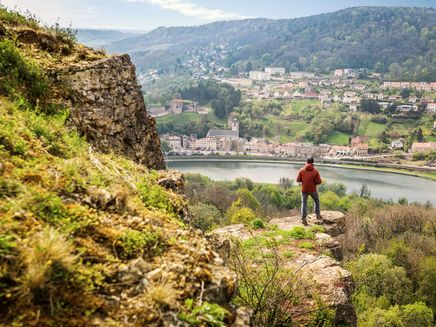A look over the "Mosel border"...
Moselle sans frontieres - Moselle without borders
Discover the borderless Moselle valley and experience the unique beauty and diversity along the international river that stretches across France, Luxembourg and Germany. The Moselle rises in the French Southern Vosges at the Col de Bussang, crosses the Grand Duchy of Luxembourg and flows into the Rhine at the Deutsches Eck near Koblenz after around 550 kilometres.
Get to know different countries, enjoy varied landscapes and immerse yourself in other cultures - experience cross-border Moselle moments with the "Moselle sans frontieres" project.


